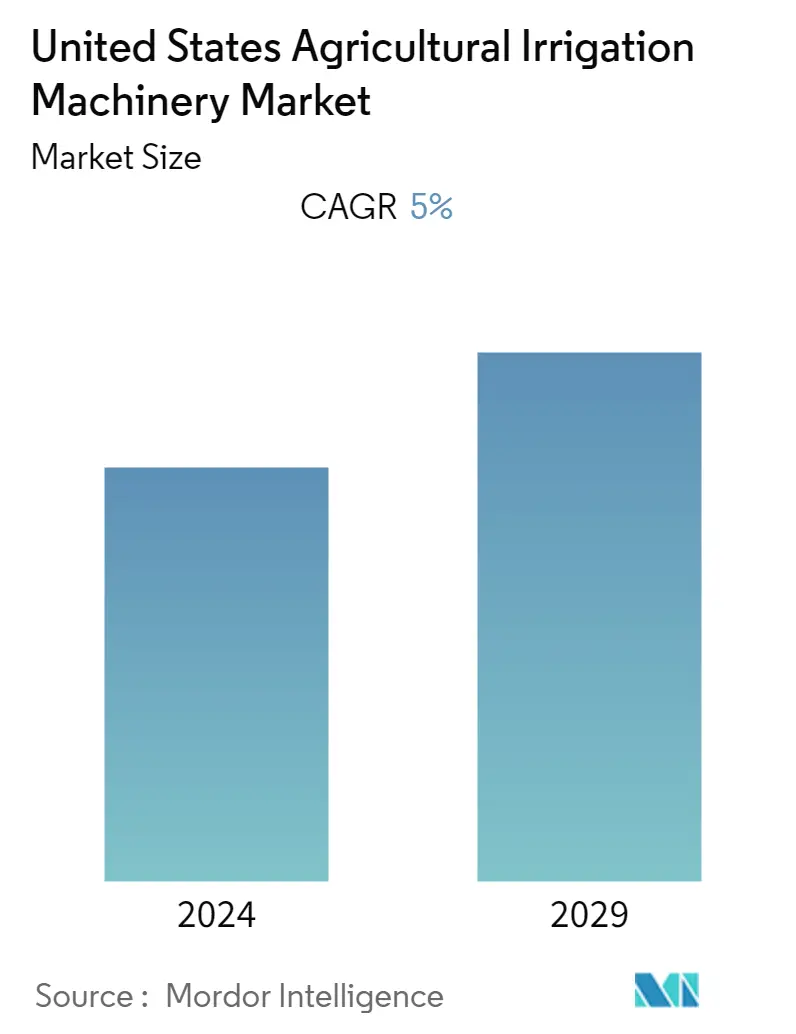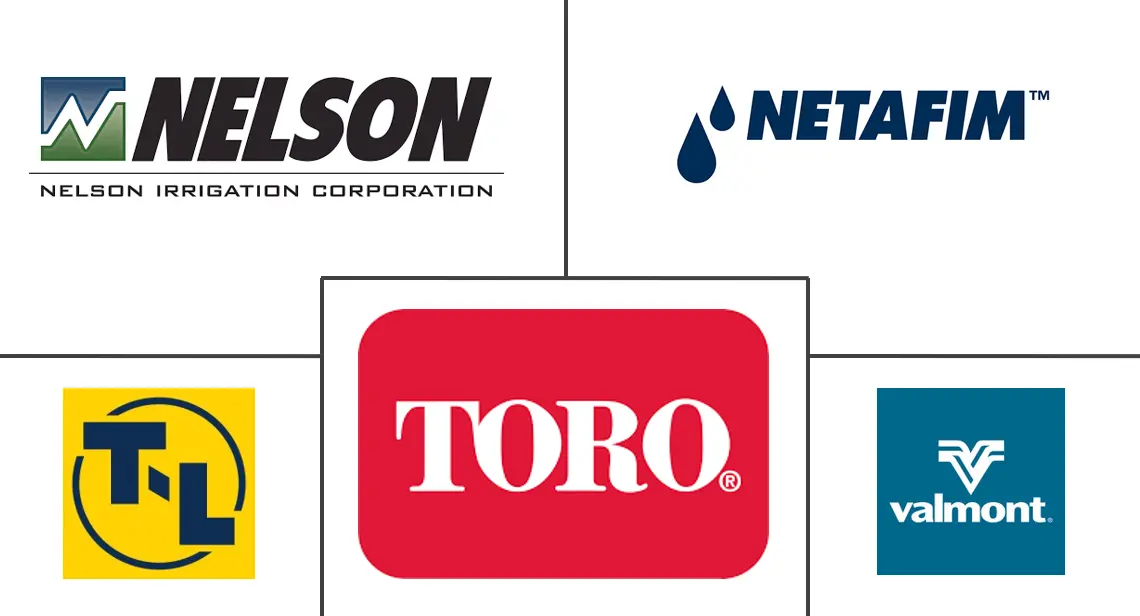Market Size of United States Agricultural Irrigation Machinery Industry

| Study Period | 2019 - 2029 |
| Base Year For Estimation | 2023 |
| Forecast Data Period | 2024 - 2029 |
| Historical Data Period | 2019 - 2022 |
| CAGR | 5.00 % |
| Market Concentration | High |
Major Players
*Disclaimer: Major Players sorted in no particular order |
Need a report that reflects how COVID-19 has impacted this market and its growth?
United States Agricultural Irrigation Machinery Market Analysis
The United States agricultural irrigation machinery market is projected to register a CAGR of 5.0% during the forecast period.
- Growing urban populations and economic development intensify competition for the nation's water resources. With surface water supplies largely allocated in most river basins of the Western United States and some river basins in the Eastern United States, emerging water demands from non-agricultural sectors must be met in many cases through a reallocation of water initially allocated to agriculture. The adoption rate of irrigation systems has increased over the past few years in the United States, with micro irrigation dominating the Pacific and sprinkler irrigation dominating the mountains and plains. Installing them minimizes soil erosion and increases crop yield with high quality and low weed growth.
- Irrigation has significantly enhanced both the productivity and profitability of the agricultural sector. According to the United States Department of Agriculture - National Agricultural Statistics Service Information (USDA-NASS) Report, 2019, irrigated farms accounted for more than 54 percent of the total value of the US crop sales on less than 30 percent of harvested cropland.
- Generally, irrigation increases crop yields and reduces yield risk while providing other potential benefits involving nutrient uptake efficiency, crop quality control, and frost protection. Irrigated crop production supports local rural economies in many areas of the United States and contributes significantly to the US livestock, food processing, transportation, and energy sectors.
- In many areas of the Pacific, mountain, and southern and northern plains regions, precipitation is insufficient to meet the water requirements of most crops, and irrigation is necessary for agricultural production. In other more humid regions, annual and seasonal variation in the amount and timing of rainfall drives irrigation adoption decisions.
- The availability of surface and groundwater is also a primary factor in the spatial distribution of irrigation. Much of the irrigation development in the West was made possible through publicly financed investments in surface water storage and conveyance projects. In the plains regions, concentrations of irrigated areas largely reflect the availability of groundwater resources, specifically the high plains aquifer (Ogallala Aquifer).
